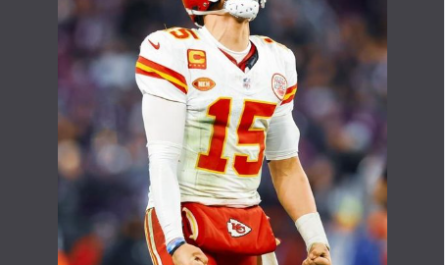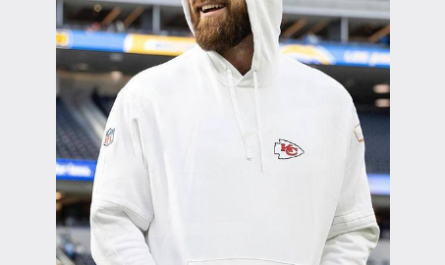Tom Brady Did Not Learn From Joe Namath’s Career
[bg_collapse view=”button-orange” color=”#4a4949″ expand_text=”Show More” collapse_text=”Show Less” ]
Joe Namath was one of the greatest quarterbacks of his era, leading the New York Jets to a shocking upset over the heavily favored Baltimore Colts in Super Bowl III. However, Namath’s career was cut short due to injuries, and he retired at just age 32 in 1977. Tom Brady would not enter the NFL until 2000, over two decades after Namath hung up his cleats. Due to this significant gap in time between their careers, Brady was unable to directly learn lessons from Namath’s playing experience. However, there are still some parallels that can be drawn between the Hall of Fame quarterback’s careers.
Namath burst onto the scene in 1965 after being drafted first overall by the Jets out of Alabama. He brought immediate star power and swagger to the fledgling AFL, boasting that he would guarantee a Jets victory over the Colts in the third Super Bowl, which was then considered the championship game between the NFL and AFL. Namath backed up his bold words by throwing for 206 yards and three touchdowns to lead the Jets to a shocking 16-7 win. This established the AFL as a legitimate rival to the older NFL and helped pave the way for the two leagues to eventually merge.
While Namath enjoyed immense fame and success early in his career thanks to that Super Bowl win, injuries began taking a major toll. In 1967, Namath suffered a serious knee injury that required an experimental surgery where they reconstructed his ACL using a piece of his hamstring tendon. This new procedure was groundbreaking at the time, but Namath would struggle with knee issues for the rest of his playing days. He played through constant pain and underwent additional surgeries in 1970 and 1972 to try and repair further damage.
Namath continued starting for the Jets throughout the late 1960s and early 70s, but his production declined significantly as his body broke down. Once a nimble scrambler who could also sling the ball all over the field, Namath became largely immobile in the pocket during his later seasons. He played his last game for the Jets in 1976 at age 33, attempting just four passes while clearly hampered by knee problems. Namath then retired after the 1977 season at age 34, walking away while still physically able instead of pushing himself to continue playing until he was completely worn down.
One lesson Brady likely did not take away from Namath’s career was how to properly manage injuries and avoid overextending himself physically. As the first quarterback to undergo knee reconstruction, Namath was a true pioneer undergoing experimental surgeries just to try and salvage his playing career. But those procedures ultimately failed to fully repair the damage done and Namath was never the same player afterwards. He played through constant pain in order to stay on the field as long as possible.
In contrast, Brady has been much more proactive about injury prevention and recovery throughout his career. He adopted a strict diet, training regimen, and lifestyle focused on peak physical conditioning and health. Brady takes advantage of cutting edge recovery methods and regularly works with some of the top bodywork experts in sports. If he suffers any minor knocks, Brady is not afraid to take rest or limited practice days in order to be 100% for games.
This approach has allowed Brady to avoid major injuries that could have derailed his career. Even at 44 years old heading into his 23rd NFL season, Brady says he still feels young and is in better shape now than 10-15 years ago thanks to constantly evolving his training. While Namath pushed through injuries and wound up retiring relatively young, Brady has been able to extend his prime well into his 40s by being incredibly diligent about his physical well-being.
Financially, Namath also did not set the best example for Brady. After retiring, Namath struggled with alcoholism and went through a messy public divorce in the 1980s that left him nearly bankrupt. He had to take odd jobs like being a parking lot attendant just to make ends meet. Namath’s lavish lifestyle and spending habits caught up to him after football.
In contrast, Brady has been much savvier about managing his wealth over two decades in the NFL. He earned over $250 million in salary alone during his playing career thanks to consistently restructuring his contracts to benefit the Patriots. But Brady has also invested wisely in business ventures outside of football like his TB12 fitness brand. He does lucrative endorsement deals but does not spend extravagantly. Brady and his supermodel wife Gisele Bundchen have amassed a net worth estimated at over $600 million.
Even in retirement, Brady is setting himself up for continued financial success rather than potentially winding up in financial ruin like Namath. He just signed a massive 10-year, $375 million deal with Fox Sports to serve as their lead NFL analyst once his playing days conclude. Brady is also exploring ventures in Hollywood and continuing to expand his TB12 brand internationally. Financially planning for life after football is another area where Brady did not follow in Namath’s footsteps.
On the field, Brady also managed to avoid the career trajectory of most other star quarterbacks who burn bright early only to fade due to injuries sustained from taking hits. Like Namath, many quarterbacks of Brady’s era who won Super Bowls in their first 10 seasons or so like Jim Plunkett, Joe Theismann, Jeff Hostetler, and Trent Dilfer never reached those heights again later in their careers.
Brady broke that mold by continuing to play at an elite, championship level well into his late 30s and now 40s. He won his 6th Super Bowl at age 39 with the Patriots and took the Buccaneers to a Super Bowl title in his first season in Tampa Bay at age 43. Brady showed no signs of slowing down physically or mentally like many quarterbacks do in their mid-30s.
Part of how Brady has sustained such a long prime at the game’s most important position can be traced back to two key decisions he made early in his career that Namath did not have the opportunity to make. First, Brady embraced a trainer at the start of his career in Alex Guerrero and their TB12 training method focused on flexibility, pliability, nutrition, hydration and recovery. This gave Brady an advantage in taking care of his body that players from Namath’s era did not have access to.
Secondly, Brady made the switch from the grind-it-out, run-heavy Patriots teams of his first few championships to a more up-tempo spread offense under Josh McDaniels and Bill O’Brien in Brady’s later New England years. This style relied more on quick passes and allowed Brady to get rid of the ball faster before taking big hits. It reduced the physical pounding and extended Brady’s career versus if he had continued dropping back 50+ times a game for 15+ seasons.
Namath played in an era before sports science and advanced schemes fully took hold. He left it all on the field with no regard for future consequences since long-term health and longevity were not prioritized the way they are now. Brady benefited immensely from the knowledge gained in the two decades after Namath retired. He has taken what we have learned about training, recovery, nutrition, conditioning, and offensive strategy and applied it ruthlessly well to his career.
There are certainly some parallels that can be drawn between Namath and Brady as all-time greats who brought championships to New York franchises early in their careers. But due to the significant gap in the eras they played in, Brady was unable to directly learn from Namath’s experience on how to avoid the injuries, financial troubles, and premature retirement that the “Broadway Joe” had to deal with. Instead, Brady blazed his own trail by taking maximum advantage of the sports science advances not available to Namath and making strategic decisions like his TB12 training methods and offensive system switches.
This allowed Brady to sustain an elite level of play for over two decades in the league rather than seeing his production fall off a cliff in his early 30s like Namath. By prioritizing his long-term health and constantly evolving his game, Brady has extended his prime years well into his 40s in ways Namath and previous quarterback greats never could. So while Namath laid the groundwork as a Super Bowl winning quarterback in New York before him, Brady truly broke the mold by not just matching but exceeding Namath’s career accomplishments thanks to lessons learned from the two decades separating their playing tenures.
[/bg_collapse]



